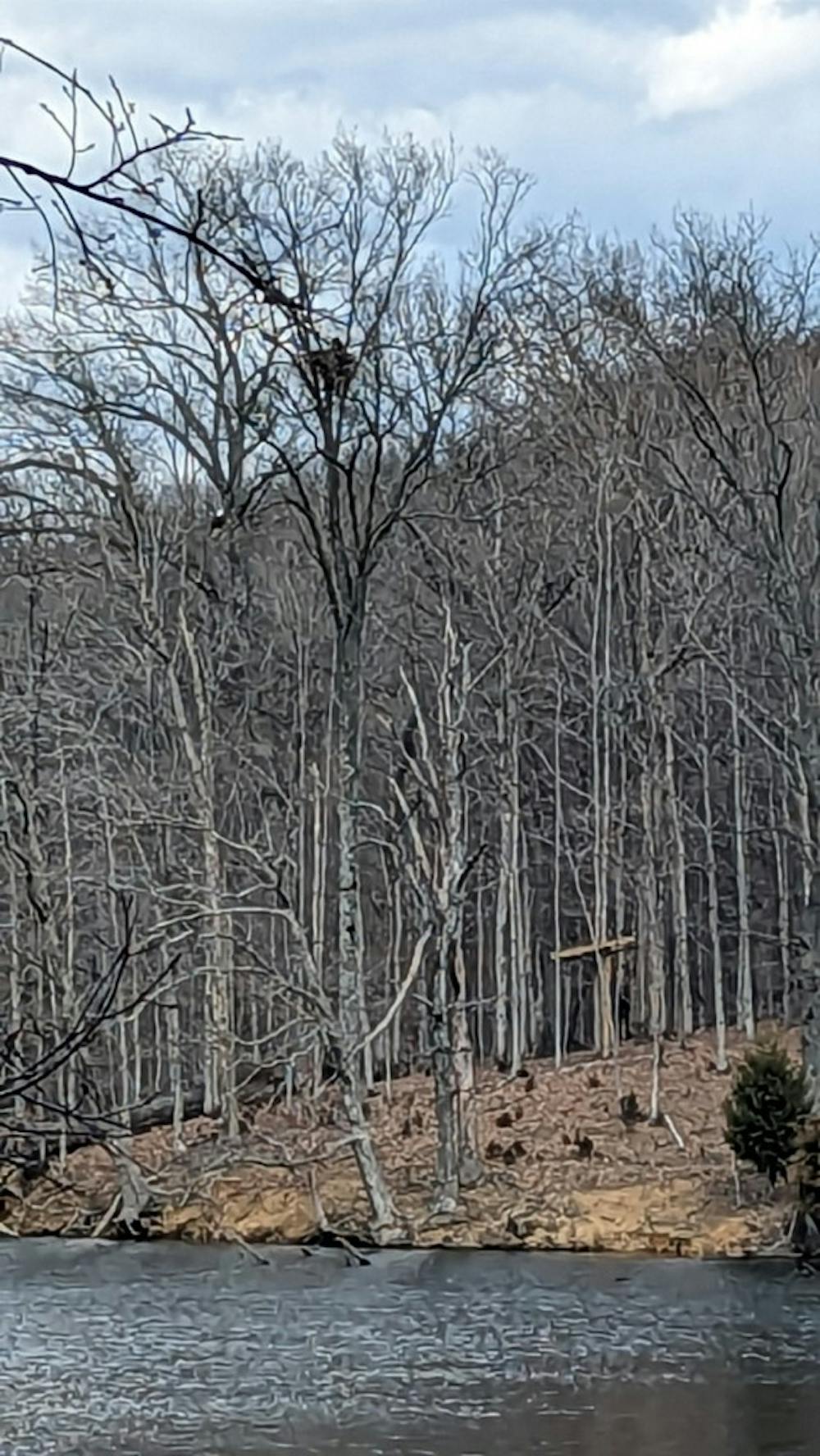
Bald eagles nesting at Radnor Lake state park
When your child returns to school next fall, wouldn’t it be great if their “What I Did Over Summer Vacation” essay included “I helped maintain a bald eagle nesting area?” They can do that at Radnor Lake State Park which is a mere twenty minutes from Broadway and home to herons, hawks, and herring. Just kidding about the herring.
The lake was created in 1914 by damming Otter Creek to provide water for steam locomotives. In 1971 concerned citizens formed Friends of Radnor Lake to stop residential development that threatened the lake and hills. In 1973 their successful grassroots fundraising effort combined with state and federal funds enabled the purchase of the area which is home to fauna such as otter, mink, turtles, bobcat, snakes, and many species of native and migrating birds. The flora includes ferns, wildflowers, mosses, trees, fungi, and other plants.
Park Manager Steve Ward, who has been there over two decades, told me that last year they welcomed 2.2 million visitors. While most simply hiked some of the over seven miles of trails, many participated in the Junior Ranger program, went on a guided canoe float, did some serious birding, or attended special programs with visiting scholars.
.I have attended hikes with Dr. Robert Loeb of Penn State who for the last twelve years has visited to research the beaver population, plant life, and the importance of beavers to the health of Radnor Lake. One of his fascinating research conclusions was that the park could use human pathways as an “odor fence” to limit beaver damage to this urban forest.

In early February a friend and I saw a flock of turkeys, deer, and turtles basking in the sun. We were also able to look through a high-powered telescope at the nesting pair of bald eagles who had just laid two to three eggs which Steve said would hatch in 32 days. Through his lens Steve was able to see the mother turning the eggs at one point, and my friend and I saw the male swooping down to the nest in response to the cries of his mate. One of last year’s eaglets is still hanging around Radnor.
On a mid-February walk, another friend and I also focused on birds as her son’s love of ornithology has led her to become quite adept at recognizing them by their calls or markings as they flitted around us. And we were thrilled to be less than 20 yards from a red-tailed hawk that swooped through the trees and to have clear sight of a great blue heron nesting colony.
Radnor also is home to the Barbara J. Mapp Aviary Education Center, which was a vision of Steve Ward, and was built through the generosity of donors and volunteers. The aviary houses seven birds of prey who can no longer be in the wild, and has an interpretive center with displays on snakes and turtles. The hours it is open are limited so as not to stress the birds so check before you go.
Nature, invasive plant species, and the millions of visitors means the park must be carefully protected and vigorously maintained. So, Radnor relies on volunteers to remove invasive species, mulch the much-traveled trails, and currently to help to complete the Harris Ridge Trail. Do you know a bar or bat mitzvah or a youth group that would like to do a tzedakah project outside with their friends? Contact Lyndy.Maness@tn.gov and spend some time at a Nashville treasure. See you out there!
The Jewish Observer is published by The Jewish Federation of Greater Nashville and made possible by funds raised in the Jewish Federation Annual Campaign. Become a supporter today.

